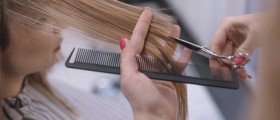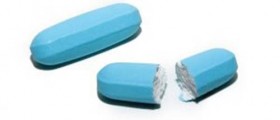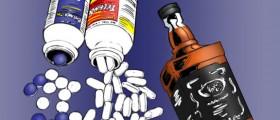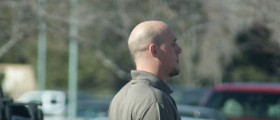
Among numerous products, only two prescription drugs have been approved by the FDA for treating hair loss and those are minoxidil (Rogaine® and finasteride Propecia®. They both reduce hair loss and can even grow new hair. However, the results last only during the drug consummation. See a hair replacement specialist to find out which are the best products for you.Consult a doctor before using any of the products containing minoxidil listed below:
Rogaine®This topical ointment needs to be applied to your scalp twice a day. Depending on the strength of the solution, it can be both nonprescription and a prescription drug. Minoxidil in it dilates the blood vessels and by doing so reduces baldness and slows down the rate of hair loss. It is particularly effective in the crown of the head, but it cannot help with the receding hairlines. New hair may appear, but only during the use of the product.
Extreme Hair Therapy EXT®EXT® is an exclusive treatment program for members of Hair Club® for Men and Women. The clients are provided with a year’s supply of products. Many of their products have not been proven to actually work, but they offer a combination of numerous treatments such as thickening treatment, minoxidil products, shampoos and conditioners, hair and scalp treatments.
Loniten®Primarily prescribed in a pill form to treat high blood pressure, Loniten® had a side effect in form of hair growth in eight out of ten people. However, not all of its side effects are desirable and they include breathing problems, drug interactions, increased heart rate, and salt and water retention.
Finasteride is the other FDA approved drug. Its products include:
Propecia®First developed as Proscar® for treating enlarged prostates, after the noticed hair growth and thickening, became Propecia®, hair loss medication in a pill form. It is a prescription drug which should be taken with caution. Pre-menopausal women should avoid it and pregnant women must not use or even touch it, because it can cause serious harm to the baby. Nine out of ten men and post-menopausal women have experienced hair growth and the results can be enhanced when combined with minoxidil.
Proscar®Some may use Proscar® in smaller doses to treat the hair loss because the insurance companies consider Propecia® a cosmetic treatment. This is not recommended.
Dutasteride was inicially developed as a drug for enlarged prostate, same as Prosar, and then became Avodart®.
Avodart®Found to be more effective than finasteride in clinical trials which showed it blocked 95% of hair loss hormone, known as DHT, appose to finasteride’s 70%. FDA is still researching it.
Other products
Retin-A®Prescribed firstly for skin conditions, and later, as a hair loss treatment. It improves minodixil absorption when combined with products which contain it and enhances the results. Sebum is a substance which maintains skin moisture but also contains DHT. Retin-A® controls sebum blockages and reduces DHT absorption by unclogging sebaceous glands and hair follicles.
Graftcyte®Include products to be used after hair transplant surgery, such as post-surgical shampoo, conditioner, hydrating gel, a spray solution, graft-site dressing. Specially designed to manage scabbing and help the healing process. It cannot prevent hair loss or make it grow again.

















Your thoughts on this
Loading...